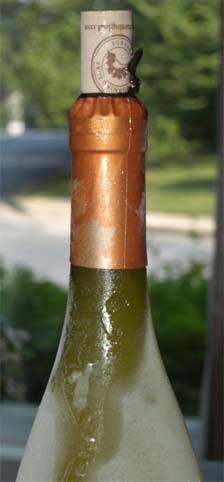In a recent blog, I wrote about sediment in wine. Those are the particle that are left in your wine glass or inside the wine bottle from tiny particles of grape skins, seeds and stems that are a natural part of wine making. And, other than being an unexpected texture in your mouth, they are harmless.
But then I recently pulled the cork on a really nice bottle of wine that had been laying on its side in my wine refrigerator for little over a year. Upon examination I found a bunch of sparkly red crystals on the bottom of the cork (photo). It was obvious this wasn’t sediment because it had defined crystalline structure. So then, what is it?
Well, without getting too much into the chemistry (and there’s a lot of chemistry in wine making), these are indeed crystals that are sometime referred to as “wine diamonds.”
These crystals are formed in a bottle of wine due to the presence of tartaric acid which, along with malic acid and citric acid, naturally appear in wine. Again, all these little crystals are harmless but the crunch you’d experience in your mouth would certainly be unexpected from a glass of wine.
These crystals can form in both white wine and red wine. While some wine makers will put their wine through additional processing (e.g., cold stabilization) for a few weeks to force these crystals to form and drop out, other wine makers prefer to do as little additional processing as possible to their wines which can result in some crystal formation.
So, if you happen to see these little “wine diamonds” either on your cork or in your glass, don’t be concerned. This is a normal and natural phenomenon. Your wine is just fine! Cheers!







